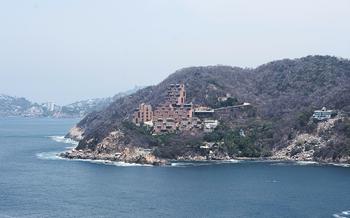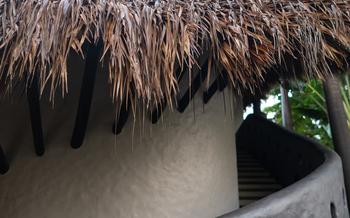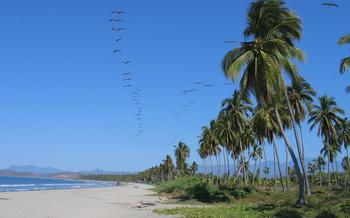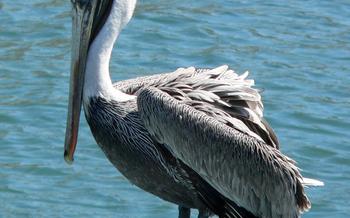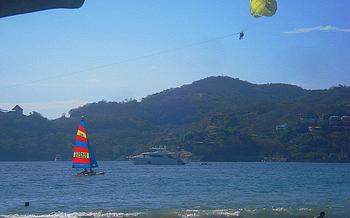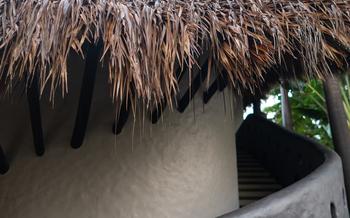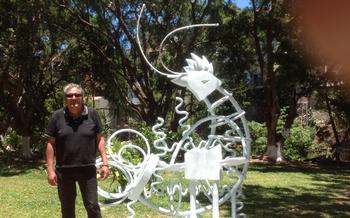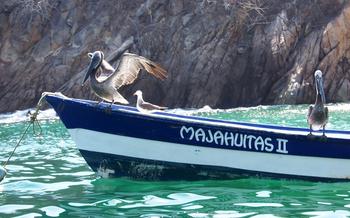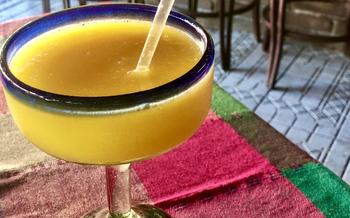
Playa Larga Birdwatching
- Getting to Playa Larga
- How to get to Playa Larga from Zihuatanejo?
- Is it possible to visit Playa Larga on a day trip?
- Are there any tours or guides available for birdwatching at Playa Larga?
- What are the costs associated with visiting Playa Larga?
- Tips for Birdwatching at Playa Larga
- What kind of equipment do you need for birdwatching at Playa Larga?
- How to behave responsibly when birdwatching at Playa Larga?
- What are some of the challenges of birdwatching at Playa Larga?
- How to make the most of your birdwatching experience at Playa Larga?
- Playa Larga Birdwatching for Beginners
- Advanced Birdwatching at Playa Larga
- Playa Larga Birdwatching Festival
- Playa Larga Birdwatching Research
- Playa Larga Birdwatching Conservation
- Playa Larga Birdwatching Ecotourism
- Playa Larga Birdwatching Photography
- Playa Larga Birdwatching Art
- Playa Larga Birdwatching Literature
- Playa Larga Birdwatching Music
- Playa Larga Birdwatching Film
- Insider Tip
Getting to Playa Larga
How to get to Playa Larga from Zihuatanejo?
Playa Larga is located approximately 60 kilometers (37 miles) northwest of Zihuatanejo, in the neighboring state of Michoacán. The drive from Zihuatanejo to Playa Larga takes about two hours and 30 minutes on well-paved roads. There are several ways to get to Playa Larga from Zihuatanejo:
-
By rental car: If you are comfortable driving in Mexico, renting a car is the most convenient way to get to Playa Larga. There are several car rental agencies in Zihuatanejo, and the cost of a rental car is typically around $30 per day.
-
By taxi: If you don't want to rent a car, you can take a taxi from Zihuatanejo to Playa Larga. The cost of a taxi is typically around $50 each way.
-
By bus: There is a bus that runs from Zihuatanejo to Playa Larga once a day. The bus departs Zihuatanejo at 8:00 AM and arrives in Playa Larga at 10:30 AM. The cost of a bus ticket is around $
Is it possible to visit Playa Larga on a day trip?
It is possible to visit Playa Larga on a day trip from Zihuatanejo, but it is a long day. The drive from Zihuatanejo to Playa Larga takes about two hours and 30 minutes each way, so you will only have about four hours to explore Playa Larga. If you are interested in birdwatching, it is best to stay overnight in Playa Larga so that you can have more time to explore the area.
Are there any tours or guides available for birdwatching at Playa Larga?
There are several tours and guides available for birdwatching at Playa Larga. You can book a tour through your hotel or through a local tour operator. The cost of a tour typically ranges from $50 to $100 per person.
What are the costs associated with visiting Playa Larga?
The costs associated with visiting Playa Larga are relatively low. The cost of a rental car is typically around $30 per day, the cost of a taxi from Zihuatanejo to Playa Larga is typically around $50 each way, and the cost of a bus ticket is around $The cost of food and lodging in Playa Larga is also very reasonable.
Tips for Birdwatching at Playa Larga
What kind of equipment do you need for birdwatching at Playa Larga?
The most important piece of equipment for birdwatching at Playa Larga is a pair of binoculars. A good pair of binoculars will allow you to see birds up close and in detail. Other useful equipment includes a field guide to help you identify birds, a camera to capture your memories, and a notebook to keep track of your sightings.
How to behave responsibly when birdwatching at Playa Larga?
It is important to be respectful of the birds and their habitat when birdwatching at Playa Larga. Avoid making loud noises or sudden movements, and stay on the designated trails to avoid disturbing the birds. It is also important to take your trash with you and leave the area as you found it.
What are some of the challenges of birdwatching at Playa Larga?
One of the challenges of birdwatching at Playa Larga is the heat and humidity. It can be very hot and humid during the day, so it is important to dress appropriately and stay hydrated. Another challenge is the lack of shade. There are not many trees or other shady areas at Playa Larga, so it is important to bring a hat or umbrella to protect yourself from the sun.
How to make the most of your birdwatching experience at Playa Larga?
To make the most of your birdwatching experience at Playa Larga, it is important to be patient and observant. Birds can be very shy and elusive, so it is important to be patient and wait for them to come to you. It is also important to be observant and look for signs of birds, such as their calls, feathers, or tracks.
Playa Larga Birdwatching for Beginners
If you're a novice birdwatcher, Playa Larga is an ideal place to start your birding journey. The diverse habitats and abundant birdlife make it easy to spot a wide variety of species, even for those with limited experience.
Some of the most common birds you can see at Playa Larga include:
- Woodpeckers: There are several species of woodpeckers found at Playa Larga, including the Acorn Woodpecker, the Golden-fronted Woodpecker, and the Ladder-backed Woodpecker.
- Hummingbirds: Playa Larga is home to several species of hummingbirds, including the White-eared Hummingbird, the Violet-crowned Woodnymph, and the Rufous-tailed Hummingbird.
- Flycatchers: There are many different species of flycatchers found at Playa Larga, including the Great Kiskadee, the Tropical Kingbird, and the Sulphur-bellied Flycatcher.
- Tanagers: Playa Larga is a great place to see tanagers, including the Summer Tanager, the Scarlet Tanager, and the Blue-gray Tanager.
- Warblers: There are many different species of warblers that migrate through Playa Larga, including the Black-throated Green Warbler, the American Redstart, and the Ovenbird.
The best places to go birdwatching at Playa Larga for beginners include:
- Playa Larga Beach: The beach is a great place to see shorebirds, such as sandpipers, plovers, and gulls.
- The mangroves: The mangroves are home to a variety of birds, including herons, egrets, and ibises.
- The forest: The forest is a great place to see woodpeckers, flycatchers, and tanagers.
The best time of day for birdwatching at Playa Larga is early in the morning or late in the afternoon. This is when the birds are most active and the temperatures are cooler.
To make the most of your birdwatching experience at Playa Larga, it is important to be patient and observant. Take your time and scan the trees, bushes, and water for birds. Be sure to listen for bird calls as well. With a little patience and effort, you're sure to see some amazing birds at Playa Larga.
Advanced Birdwatching at Playa Larga
Playa Larga is not just for beginners. It is also a paradise for experienced birdwatchers who are looking for a challenge. There are a number of rare and elusive birds that can be found at Playa Larga, including the Red-billed Tropicbird, the Magnificent Frigatebird, and the Black Skimmer.
To see these birds, you will need to be prepared to go off the beaten track and to spend some time in the field. You will also need to be familiar with the different habitats that these birds prefer.
The best place to start your search is at the Playa Larga Bird Sanctuary, which is home to a variety of rare and endangered birds. The sanctuary offers guided tours that can help you to find and identify these birds.
Another good place to look for rare birds is at the nearby Laguna de Chacahua, which is a large lagoon that is home to a variety of waterbirds. You can rent a boat to explore the lagoon, or you can simply walk along the shore and look for birds.
The best time to visit Playa Larga for advanced birdwatching is during the spring and fall migration, when millions of birds pass through the area. However, there are also a number of resident birds that can be seen year-round.
If you are serious about birdwatching at Playa Larga, you should consider hiring a guide. A guide can help you to find the best places to see birds, and they can also help you to identify the different species that you see.
Playa Larga Birdwatching Festival
The Playa Larga Birdwatching Festival is an annual event that celebrates the incredible diversity of birdlife found in the Playa Larga region. The festival typically takes place in February or March and features a variety of activities for birdwatchers of all levels, including guided birdwatching tours, workshops, and presentations by expert ornithologists.
The festival is a great opportunity to learn more about the birds of Playa Larga and to meet other birdwatchers from around the world. It is also a chance to support the local community, as proceeds from the festival are used to fund bird conservation projects in the region.
To participate in the Playa Larga Birdwatching Festival, you can register online or in person at the festival headquarters. There is a fee to attend the festival, which covers the cost of activities and materials.
The Playa Larga Birdwatching Festival is a great way to experience the incredible birdwatching opportunities that Playa Larga has to offer. Whether you are a beginner or an experienced birdwatcher, you are sure to have a memorable experience at the festival.
Playa Larga Birdwatching Research
Playa Larga is a world-renowned birdwatching destination, and as such, it has attracted the attention of researchers from all over the world. Several research projects are currently underway at Playa Larga, focusing on a variety of topics, including bird migration, bird behavior, and bird conservation.
One of the most important research projects at Playa Larga is the Playa Larga Bird Observatory, which is operated by the Universidad Nacional Autónoma de México (UNAM). The observatory collects data on bird migration, bird abundance, and bird behavior. This data is used to help scientists understand how birds use the area and how they are affected by changes in the environment.
Another important research project at Playa Larga is the Playa Larga Bird Conservation Project, which is a collaboration between UNAM and the National Audubon Society. The project aims to protect birds and their habitats at Playa Larga. The project works to reduce threats to birds, such as habitat loss and hunting, and to promote sustainable tourism practices.
If you are interested in getting involved in birdwatching research at Playa Larga, there are several ways to do so. You can volunteer with the Playa Larga Bird Observatory or the Playa Larga Bird Conservation Project. You can also conduct your own research project, with the approval of UNAM and the National Audubon Society.
Playa Larga Birdwatching Conservation
Threats to Birds at Playa Larga
Playa Larga is facing a number of threats, including:
- Habitat loss: The destruction of mangroves and other coastal habitats is reducing the available habitat for birds.
- Pollution: The pollution of the lagoon and the surrounding waters is harming birds and their food sources.
- Overfishing: The overfishing of the lagoon is reducing the food supply for birds.
- Climate change: The rising sea levels and changing weather patterns are threatening the coastal habitats that birds depend on.
Conservation Efforts to Protect Birds at Playa Larga
A number of conservation efforts are being made to protect birds at Playa Larga, including:
- Habitat restoration: The restoration of mangroves and other coastal habitats is helping to create new habitat for birds.
- Pollution reduction: The reduction of pollution in the lagoon and the surrounding waters is helping to improve the health of the ecosystem and the birds that depend on it.
- Sustainable fishing practices: The promotion of sustainable fishing practices is helping to ensure that there is enough food for birds.
- Climate change adaptation: The development of climate change adaptation strategies is helping to protect birds from the impacts of rising sea levels and changing weather patterns.
How You Can Help to Protect Birds at Playa Larga
There are a number of things you can do to help protect birds at Playa Larga, including:
- Reduce your consumption of seafood: By reducing your consumption of seafood, you can help to reduce the pressure on fish populations and the birds that depend on them.
- Support sustainable businesses: By supporting businesses that are committed to sustainability, you can help to create a demand for sustainable products and practices.
- Educate yourself and others about the importance of bird conservation: By educating yourself and others about the importance of bird conservation, you can help to raise awareness of the threats that birds face and the need to protect them.
Benefits of Bird Conservation at Playa Larga
The conservation of birds at Playa Larga is important for a number of reasons, including:
- Birds are an important part of the ecosystem: Birds play a vital role in the ecosystem by helping to control insects, pollinate plants, and disperse seeds.
- Birds are a valuable economic resource: Birdwatching is a popular tourist activity, and it can generate significant revenue for local communities.
- Birds are a part of our cultural heritage: Birds are an important part of our cultural heritage, and they have a special place in the hearts of many people.
Playa Larga Birdwatching Ecotourism
Ecotourism is a form of responsible tourism that aims to minimize the negative impact on the environment and promote the conservation of natural resources. Birdwatching ecotourism can benefit Playa Larga in several ways.
Firstly, it can generate income for the local community, which can be used to support conservation efforts and improve the standard of living for local people. Secondly, it can raise awareness of the importance of bird conservation and the unique birdlife of Playa Larga. This can help to protect birds and their habitats from threats such as habitat loss and pollution. Thirdly, it can promote sustainable practices, such as the use of renewable energy sources and the reduction of waste.
However, there are also some challenges associated with birdwatching ecotourism at Playa Larga. One challenge is the need to balance the needs of tourists with the needs of the birds. It is important to minimize disturbance to birds, particularly during nesting and breeding seasons. Another challenge is the need to ensure that tourists are aware of the importance of responsible birdwatching practices.
To promote birdwatching ecotourism at Playa Larga, it is important to work with local communities and tour operators to develop sustainable tourism practices. It is also important to educate tourists about the importance of responsible birdwatching and the unique birdlife of Playa Larga. By working together, we can ensure that birdwatching ecotourism benefits both the local community and the birds of Playa Larga.
Playa Larga Birdwatching Photography
Challenges of Bird Photography at Playa Larga
Playa Larga is a paradise for bird photographers, but it also poses a number of challenges. The birds are often very active and can be difficult to track, especially in the dense vegetation. The lighting conditions can also be challenging, as the sun can be very bright and harsh at times.
Equipment for Bird Photography at Playa Larga
To get the best results, it is important to have the right equipment. A good camera with a telephoto lens is essential for capturing clear and detailed images of birds. A tripod is also helpful for keeping your camera steady, especially when shooting at slow shutter speeds.
Tips for Taking Stunning Bird Photos at Playa Larga
Here are a few tips for taking stunning bird photos at Playa Larga:
- Be patient and wait for the right moment. The best shots often come when the birds are unaware of your presence.
- Use a telephoto lens to get close to the birds without disturbing them.
- Shoot at a fast shutter speed to freeze the action.
- Use a tripod to keep your camera steady.
- Experiment with different angles and compositions to create unique and interesting shots.
Best Places for Bird Photography at Playa Larga
Some of the best places for bird photography at Playa Larga include:
- The beach: The beach is a great place to photograph seabirds, such as pelicans, gulls, and terns.
- The mangroves: The mangroves are home to a variety of birds, including herons, egrets, and ibis.
- The forest: The forest is home to a variety of birds, including parrots, toucans, and woodpeckers.
Playa Larga Birdwatching Art
Playa Larga has not only inspired birdwatchers, researchers, and conservationists but also artists from all over the world. The beauty and diversity of the birdlife at Playa Larga have been captured in a variety of artistic mediums, including painting, sculpture, photography, and even music.
One of the most famous artists who has been inspired by Playa Larga is Mexican painter Jorge Olguín. Olguín has created a series of paintings that depict the birds of Playa Larga in their natural habitat. His paintings are known for their vibrant colors and their attention to detail.
Another artist who has been inspired by Playa Larga is American sculptor Jim Denevan. Denevan has created a series of sculptures that are made from found objects that he has collected from the beach at Playa Larga. His sculptures are often whimsical and playful, and they often feature birds as their subjects.
The art inspired by Playa Larga can be found in galleries and museums all over the world. It is a testament to the beauty and diversity of the birdlife at Playa Larga, and it is a reminder of the importance of protecting this special place.
Playa Larga Birdwatching Literature
Playa Larga has been the subject of numerous literary works, both fiction and non-fiction. These works have helped to raise awareness of the importance of Playa Larga as a birdwatching destination and have inspired many people to visit the area.
One of the most famous works of literature about Playa Larga is the novel "The Birds of Playa Larga" by Peter Matthiessen. The novel tells the story of a group of birdwatchers who travel to Playa Larga in search of rare and endangered species. The novel is a beautifully written and evocative portrayal of the natural beauty of Playa Larga and the challenges facing its wildlife.
Another popular work of literature about Playa Larga is the non-fiction book "A Birder's Guide to Playa Larga" by David Sibley. The book provides a comprehensive overview of the birds of Playa Larga, including information on their identification, behavior, and habitat. The book is an essential resource for any birdwatcher planning a trip to Playa Larga.
In addition to these two works, there are a number of other books, articles, and essays that have been written about Playa Larga. These works cover a wide range of topics, from the history of birdwatching in the area to the challenges facing its wildlife.
If you are interested in learning more about Playa Larga, I encourage you to explore the literature that has been written about the area. These works will provide you with a deeper understanding of the natural beauty and importance of Playa Larga, and will inspire you to visit this unique and special place.
Playa Larga Birdwatching Music
The unique ecosystem of Playa Larga and its diverse birdlife have inspired musicians worldwide to create enchanting melodies. The tranquil atmosphere and the symphony of bird calls have served as muses, resulting in beautiful compositions that capture the essence of this natural paradise.
One notable musician who has found inspiration at Playa Larga is the renowned Mexican composer, Miguel Ángel, known for his captivating fusion of traditional Mexican music with contemporary sounds. In his album "Cantos de Playa Larga," he pays homage to the birds of Playa Larga. The album features tracks like "El Vuelo del Pelícano" (Flight of the Pelican), which mimics the soaring grace of the pelicans that frequent the area, and "La Danza de las Garzas" (Dance of the Herons), which captures the elegant movements of the herons as they glide through the waters.
Another musician who has been captivated by the magic of Playa Larga is the American jazz saxophonist, John Coltrane. Inspired by the intricate calls of the migratory birds, he composed the iconic track "Playa Larga," a complex and free-flowing piece that reflects the diversity and beauty of the Playa Larga birdlife.
Whether through traditional Mexican melodies or contemporary jazz improvisations, music has become a powerful medium to express the wonder and enchantment of Playa Larga's birdwatching experience. These musical creations allow us to connect with the natural world in a profound way, reminding us of the importance of preserving and cherishing this unique ecosystem.
Playa Larga Birdwatching Film
Playa Larga has been the subject of several documentaries and films, highlighting its unique birdwatching opportunities and the importance of bird conservation. One notable film is "The Birds of Playa Larga," produced by the renowned nature filmmaker David Attenborough. This film provides a comprehensive look at the diverse birdlife of Playa Larga, showcasing the incredible variety of species that can be found in this unique ecosystem.
Another film worth mentioning is "Birdwatchers: The Playa Larga Experience," which follows a group of passionate birdwatchers as they explore the wonders of Playa Larga. This film offers a personal perspective on the joys and challenges of birdwatching in this extraordinary location.
If you're interested in learning more about the birds of Playa Larga and the importance of bird conservation, these films are a great place to start. They provide a captivating and informative glimpse into the world of Playa Larga birdwatching.
To watch these films, you can check online streaming platforms, visit local film festivals, or contact the Playa Larga Birdwatching Festival organizers for recommendations.
Insider Tip
Playa Larga is a unique destination that offers a truly immersive birdwatching experience. To make the most of your visit, consider the following insider tips:
- Stay in a local guesthouse or hotel. This will allow you to get to know the local community and learn more about the birds and their habitat.
- Hire a local guide. A knowledgeable guide can help you find the best birding spots and identify the different species you see.
- Be prepared for the weather. Playa Larga can be hot and humid, so be sure to bring plenty of water and sunscreen.
- Respect the wildlife. Always stay on the trails and avoid disturbing the birds.
- Take your time. Birdwatching is a relaxing and rewarding activity. Don't rush your visit, and take the time to enjoy the beauty of Playa Larga.
Remember to be respectful of the local culture and traditions. Learn a few Spanish phrases and try to blend in with the locals.
Most importantly, have fun! Playa Larga is a beautiful and welcoming place, and you are sure to have a memorable experience.
